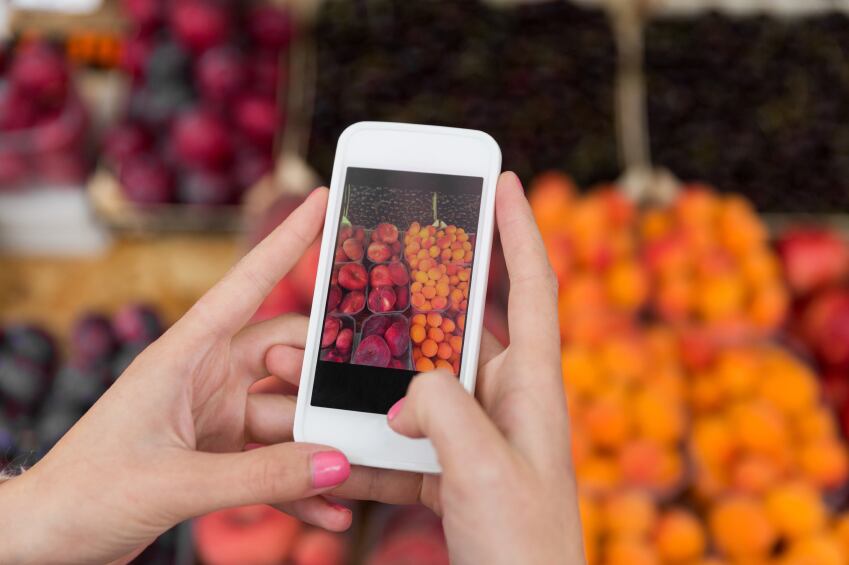The analysts have released a new report listing the top 10 European markets with the highest fruit and vegetable consumption in 2015, with sales forecasts throughout 2016 – 2020.
The UK was the 7th biggest buyer of fruit and 5th for vegetables. In 2015, Brits bought over 2.6 million tonnes of fruit and 3.75m tonnes of vegetables, and are anticipated to continue on roughly the same trajectory up to 2020.
“The overall performance of fruits and vegetables in the UK is underpinned by the increasing health awareness among consumers and the growing adoption of vegetarian and vegan diets,” Anastasia Alieva, Euromonitor’s head of fresh food said.
However, she said brands are now looking past print and television advertising to social media platforms like Twitter and Instagram. It is these platforms food companies should target to push healthy eating, she added.
“With growing awareness of health issues and an increasing number of people adopting healthier diets, producers should focus on targeting an increasingly health-conscious and tech-savvy consumer base and aim to reach potential buyers through social media strategies and promoting the added-value benefits of fresh produce over processed alternatives.”
Though, despite Britain’s relatively high ranking among other European countries, consumption per capita data does not paint quite as positive a picture.
In per capita sales, the UK ranks 18th for fruit sales at 40.80 kg per capita, and 17th for vegetables at 58 kg per capita.
Biggest buyers
Turkey and Russia are the top two European consumers of fruit and veg despite a dip in sales over the past five years, according to the report.
Turkey remains the clear lead with 8.3 million tonnes of fruit and 11.6 million tonnes of vegetables sold in 2015. The closest contender is Russia, which sold 5.5 million tonnes of fruit and 9.4 million tonnes of vegetables in the same year.

In the two countries: “Sales of fresh fruits were supported by the health and wellness trend, which grew in popularity,” a Euromonitor spokesperson told FoodNavigator.
Both look set to remain number one and two for fruit and vegetable shopping in Europe through to 2020, the figures show. However the spokesperson warned some of the previous hold-ups which caused a decline in sales over the last five years could continue to affect potential.
“A climate of shrinking disposable incomes, consumers are becoming less willing to spend too much money on fruit. Moreover, the overall lower quality of the fruit available in stores has had a negative effect of the perception of such products as healthy,” the spokesperson said.
For Russia in particular, the unfavourable political situation and economic downturn in 2015 led to a 3% decline in total vegetables sold, whilst the price of veg rose. Tomato prices soared as much as 30% in 2015, whilst cucumbers went up by 20%.
“This, together with the overall poorer quality of available produce, discouraged consumers from maintaining previous levels of vegetable consumption,” the spokesperson noted.
“Fruits in Russia will continue to be heavily dependent on imports. The category’s level of saturation will be affected by how fast and at what cost import streams are restructured.”
Still, once economic situation stabilises in Russia, demand is expected to make a good recovery since many products – including apples, melons, watermelons, pears, berries and lemons – are widely used in many recipes.
Other countries
Meanwhile, Spain’s decreasing sales of fresh produce looks set to continue in the face of rising emigration and processed fruit and veg.
Following a total volume decline of 4% in 2014, demand for vegetables fell by 3% to 3m tonnes in 2015.
“Rising levels of emigration, combined with the high convenience of added-value processed fruit and vegetables (…) continued to negatively impact volume sales of fresh vegetables at the end of the 2010 – 2015 review period,” the spokesperson said.
“Demand for vegetables in Spain remains highly seasonal in comparison with the majority of other European countries. This means a wide variety of vegetables during the summer, whilst fewer products are available during the winter. The annual consumption of fresh vegetables thus depends greatly on the quality and quantity of the country’s agricultural harvests, which tend to be reflected in retail selling prices.”
Meanwhile, several markets in Eastern Europe – not yet in the top 10 for sales – look set to have big growth trajectories for fruit buying up to 2020.
For fruit sales, Czech republic is predicted to see 3.4% compound annual growth (CAGR), Slovakia with 3.1% and Hungary with 2.9%.
The fastest growing markets for vegetable consumption are Switzerland with 2.1% CAGR, and the Netherlands and Denmark, tied with a predicted 1.8%.
